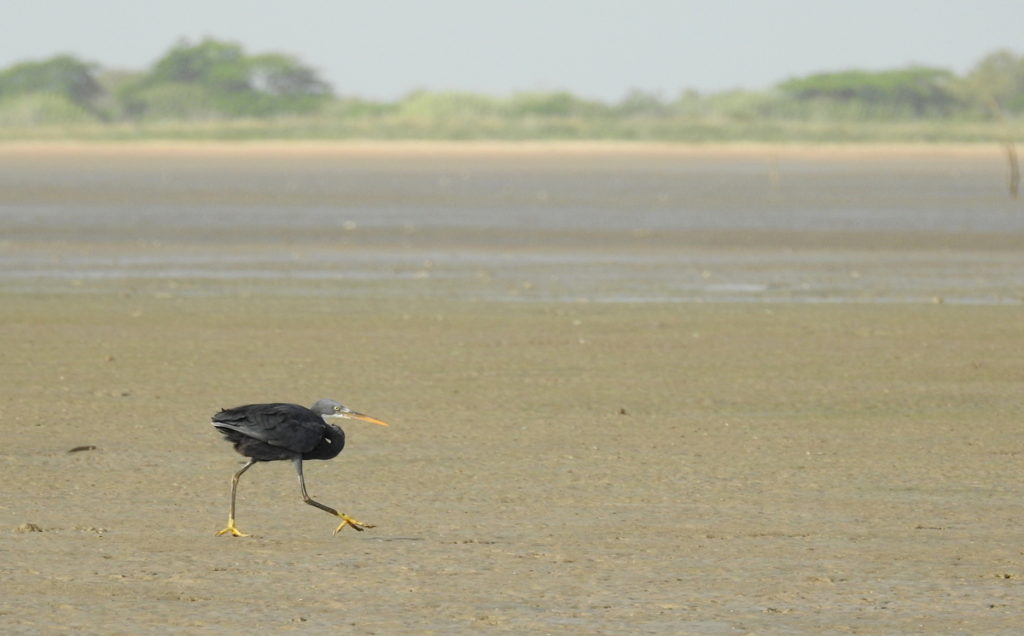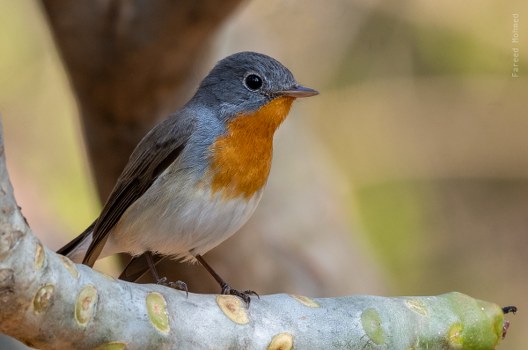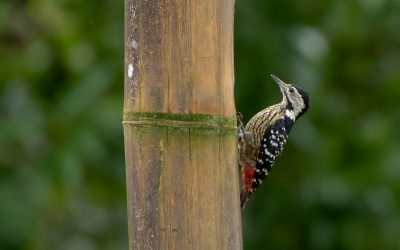By Ramit Singal
The previous article focussed on the 4 regularly occurring white egrets from India. In this follow-up post, the attention will shift to egrets that happen to be dimorphic, i.e., they have a dark morph as well as a white morph.
The Reef-Egrets are chiefly coastal, associated with beaches, estuaries, islands, etc. In India, the Pacific Reef-Egret is restricted to the Andaman and Nicobar Islands while the Western Reef-Egret ranges across much of the mainland’s coast and occasionally wanders inland – sometimes as far in as Corbett National Park! The ranges of these two, however, do not overlap. The Little Egret is found across the mainland, along the coast and in the islands and often mix with the Reef-Egrets when feeding.

A dark morph Western Reef-Egret stalking something © Divya Mudappa (Checklist)
The Western Reef-Egret and the Pacific Reef-Egret are readily identified when seen in their dark morphs. However, they also occur regularly in a white morph. When in their white morph, they superficially resemble Little Egrets. To compound matters, the Little Egret is known to occur in a dark morph too – but this is very rare.
In order to distinguish these egrets from each other, this article will emphasize structural differences between the three species with short notes on the colour of bills and feet. This is done so that the colour of the bird becomes less important, and the egret can be identified regardless of whether it is a white- or dark-morph bird.

From L to R: Little Egret © Snehasis Sinha, Western Reef-Egret © Sasidharan Manekkara, Pacific Reef-Egret © Dinesh Singal
All white morphs. Here, note 1) Overall structure, 2) Shape of neck, 3) Legs, 4) Bill
| Little Egret | Western Reef-Egret | Pacific Reef-Egret | |
|---|---|---|---|
| 1. Structure | Overall small and slender | Appears lean and tall | Stocky and short, with a longer body |
| 2. Neck | Graceful, S-shaped neck | Long, slim neck with slight kink | Relatively thick neck |
| 3. Legs | Long, thin legs | Long but thicker legs | Short, thick legs |
| 4. Bill | Thin, long and straight | Thicker with curved upper mandible | Thick, large. Appears swollen. |
Note: When feeding or resting, the Western Reef-Egret usually holds its body more horizontally than the Little Egret, though this may not always be the case.
Secondary features, and perhaps less reliable (due to how variable they are) include the colour of the bill and the colour of the feet/legs.

From L to R: Little Egret © Rajesh Radhakrishnan, Western Reef-Egret (White morph) © Conrad Braganza, Pacific Reef-Egret (Dark morph) © Shreeram MV.
Note the bill and feet colour as well as the extent of the colour in all egrets. Also note the stocky built of the Pacific Reef-Egret as well as the long neck, tall and lean structure of the Western Reef-Egret.
| Little Egret | Western Reef-Egret | Pacific Reef-Egret | |
|---|---|---|---|
| 1. Bill Colour | All dark | Partially dark | Dark or partially dark |
| 2. Feet/Leg Colour | Yellow feet (except in ssp nigripes) | Variable. Yellow on feet only or may extend higher up the tarsi | Largely yellow legs |
Remember, there will always be some birds that will prove too tricky to ID in the field (or from photos). In this case, if the bird is white – you can always make use of white egret sp.
Do check out the eBird media explore tool or other photograph databases (such as Oriental Bird Images) to identify these differences and practice.
To read more about different morphs of Western Reef-Heron (Western Reef-Egrets) and Little Egrets in detail, check out this article.




Very Informative. Thank you for Sharing.
Informative reading. TFS
Awesome ….Thanks a lot for sharing
Informative article …
Thank You
Quite informative, thanks. Note, the link for more details mentioned at the end is a dead end.